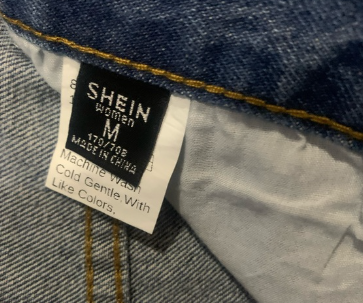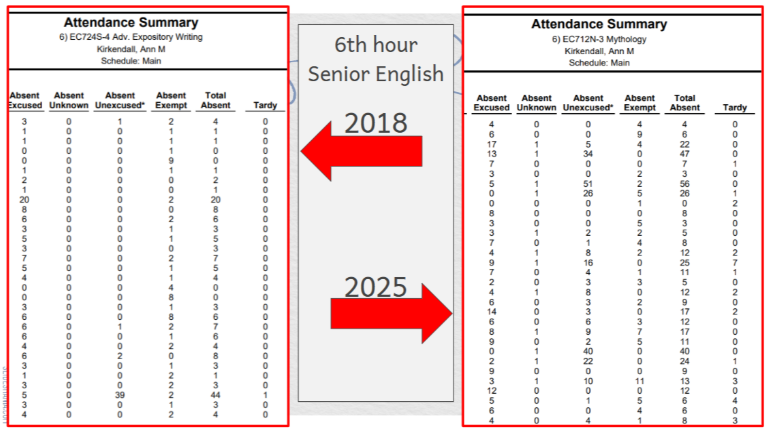Gen-Z: Wearing hypocrisy on our sleeves

December 19, 2022
Pull ten articles of clothing out of any teen’s closet and take a peek at the tags. You’re sure to see several brands like Shein, Forever 21, H&M, Zara, and Gap. These brands, and others, are major culprits of the addiction that has taken Gen-Z by storm: fast fashion.
What is fast fashion?
“Fast fashion” describes cheap and trendy clothing that companies produce very quickly to meet consumer demands. Companies advertise and output thousands of these styles every day. Most strikingly, though, they sell the products at a very low price. The prices and accessibility allow consumers to jump on new styles at the height of their popularity. However, fast fashion clothing isn’t meant for longevity. Companies trade quality goods for quick trend turn over. They also trade a clean planet, ethical work environments, and overall global health for profit.
Environmentally Unfriendly
Fast fashion raises major environmental and ethical concerns. Primarily, fast fashion is a major polluter. In fact, the fashion industry is the world’s second largest polluter (trailing only the oil industry). Because fast fashion products aren’t made for longevity, they’re made of cheap, synthetic fibers. This means that many toxic chemicals and substances go into production. On top of that, many clothing producing countries do not have strict regulations for production. This allows companies to abuse the environment throughout production. For example, companies can dispose of toxic chemicals used for synthetic fabrics unsafely. It’s common for companies to dump toxic wastewater into rivers and streams. This practice harms all aquatic life and the people living around riverbanks. The toxic and carcinogenic water eventually disperses into the ocean, where another host of problems occurs. Fast fashion products are majorly produced with oil, which depletes the non-renewable resources left on Earth. Additionally, many overseas companies operate off of coal. This is the dirtiest of all energy sources. Sadly, fast fashion alone is responsible for 10% of global greenhouse gas emissions.
On top of depleting the planet, there’s a human element to the fast fashion epidemic. Without regulation, companies don’t have to consider ethics. Many companies operate under inhumane conditions. Workers receive little to no rights, low wages, and exploitation in unsafe work environments. Is that Shein haul really worth the repercussions on the environment and humanity?
Where Gen-Z Comes In
Fast fashion fills closets all over the world. The majority of these closets belong to Gen-Z. Fast fashion companies target Gen-Z on social media and bombard them with advertisements. Despite this, a study found that 75% of Gen-Zers claimed that sustainability was the most important purchasing factor. In reality, more than half of the generation admits that their closets are “mostly fast fashion.” Gen-Zers fall prey to fast fashion giants time after time. This is interesting because although Gen-Z is known for their awareness and activism, they’re the major consumer of the most environmental and ethical sin of our time.
Not only is Gen-Z aware, but they also tend to be vocal when it comes to their activism. Social media allows teens to do this. It’s a quick and easy way to spread information and opinions. Social media allows Gen-Zers to be, or at least call themselves, activists. Many Gen-Zers fill their Instagram stories with infographics and articles to bring awareness about certain issues. A post doesn’t necessarily lead to action, though. In fact, Gen-Zers lack of action has become more apparent. The teens who quickly repost about stopping climate change are the same teens who purchase from fast fashion companies every week without a second thought. For the most part, this generation means no harm. However, it’s crucial that Gen-Z uses their activism to create change, not an Instagram story. As our world slowly becomes more cognizant of fast fashion’s environments and ethical impacts, Gen-Z can learn to take the lead in spreading awareness and action for stopping fast fashion consumption.
Affordable, But at What Cost?
Many teen fast fashion consumers excuse their ignorance by praising its affordability. Though a pair of jeans’ immediate price may be cheaper, the overall cost is greater. According to the United Nations Environment Programme (UNEP), it costs 998 gallons of water to create one pair of jeans. Over 1.2 billion pairs of jeans are purchased each year. Choosing fast fashion to save a few dollars results in a short term good you may feel. Buying sustainably or limiting your consumption promotes a long term good for you and the rest of the planet.
The Solution
Affordable and eco-friendly clothing options exist. Thrifting is a great option. Gen-Z actually popularized thrifting. They removed the shame of buying already worn clothes and rebranded it as a fun activity to do with friends. Some even see it as a challenge to find the best thrifts and to collect a vintage and authentic style. After all, one man’s trash can become another man’s treasure. Resale websites like Depop and Poshmark are also trending. Anyone can buy and sell clothes through the site. Importantly, thrifting and resale sites aid over-consumption and textile waste. Consumers who are looking for never-worn-before clothes can choose to purchase from reputable environmentally-friendly companies. Websites like goodonyou.eco highlight some of the most popular clean brands.
Although buying new clothing is fun, consumers can best help the environment and textile workers by buying less clothing, choosing new clothing well, and making the clothing we already have last. Gen-Z prides themselves to be the most eco-conscious generation. It’s time for teens to fight against their own hypocrisy and create change themselves.





